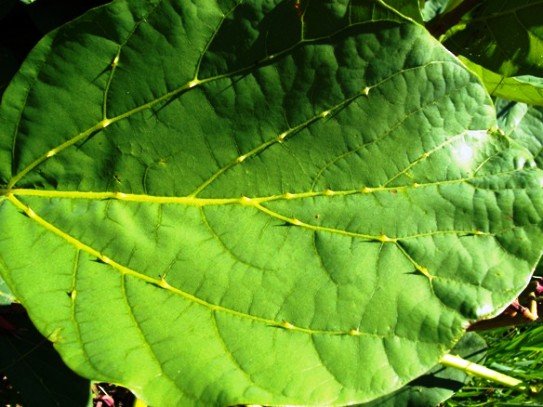Erythrina zeyheri leaflet

The leaf of Erythrina zeyheri shown here has hard, yellowish cream prickles scattered along the big veins on its surface. The leaf is actually a leaflet, forming part of one trifoliolate leaf comprising three leaflets. The word leaflet suggesting something small is misleading, really referring to a part of a full leaf.
Resources in the subterranean suffrutex annually produce new above ground stems and these large trifoliolate leaves close to the ground, as this tree has its stems below ground. Clearly, the plant needs the leaves not to be browsed or interfered with excessively, hence the prickles. While some animals may think twice, leaves will also be sacrificed, therefore they are produced in abundance. Remaining leaves serve to feed the more permanent below ground plant parts through their photosynthesis in the sunlight.
Growing in grassland where fire ravages the dry grass during most winters, the plant is well prepared: prickles on summer leaves to discourage browsers and subterranean trunks where heat doesnt kill.
It is thought that such a plant may be hundreds, even thousands of years old (Prof. Braam van Wyk in www.fse.org.za), surfacing via a colony of seemingly independent “growth points” for all to see, while it keeps big buried secrets (Coates Palgrave, 2002).

